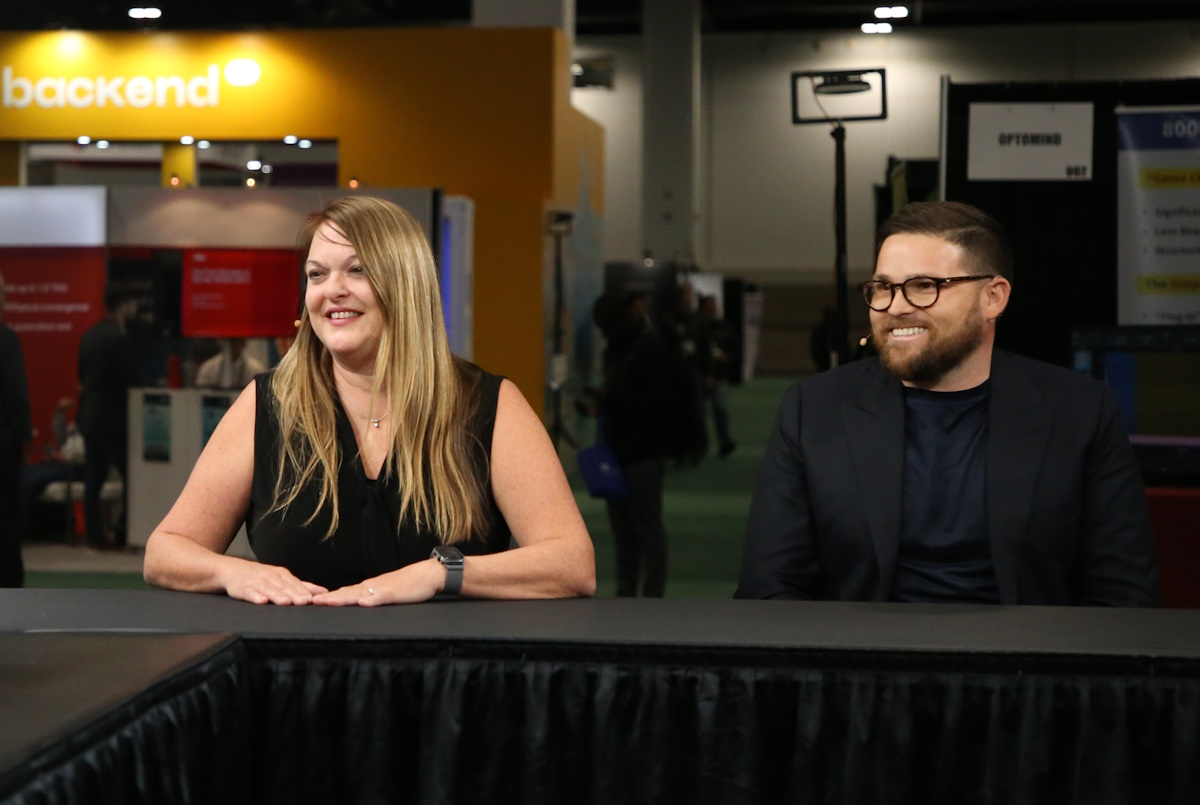 AI
AI
 AI
AI
 AI
AI
High-performance computing has been redefined as the pursuit of results and problem-solving, transcending the confines of hardware and software.
Meanwhile, AI has emerged as a transformative force, with applications spanning language models, voice, vision and more. It was also revealed that there is a need for resource optimization to help overcome bottlenecks and provide decision-makers with the tools and confidence to embrace AI, according to Steen Graham (pictured, right), co-founder and chief executive officer of Scalers AI Inc., an enterprise AI software company.
“We run a lot of AI on CPUs, but we’re just running right by them and using that GPU, so we don’t have a bottleneck,” Graham said. “Eliminating all those bottlenecks is really important throughout the process, especially as you put together those high-value assets.”
Graham was joined by Kimberly Leyenaar (left), principal storage performance architect at Broadcom Inc., as they spoke with theCUBE industry analysts David Nicholson and Savannah Peterson at SC23, during an exclusive broadcast on theCUBE, SiliconANGLE Media’s livestreaming studio. They discussed innovations in computing, scalability, and the limitless potential of emerging technologies and the Broadcom/Scalers relationship. (* Disclosure below.)
During her career, Leyenaar has witnessed a significant shift from storage performance to AI and machine learning. Fortunately, she has been able to leverage Broadcom’s resources while working on AL/ML projects. This transition underscores the increasing importance of AI in the tech industry.
“My job is I’m trying to look at what the workloads look like,” she said. “We’re working a lot with MLPerf trying to drive these workloads … we have the tools to kind of analyze what that workload looks like from the switch and from the network and from the storage.”
The transformation of HPC is being by led the advent of AI. Emerging technology in this field, particularly large language models, can revolutionize industries such as insurance, according to Graham. The importance of AI in delivering both bottom-line productivity gains and top-line results can’t be understated.
“Scalers AI is an enterprise AI software company, and we’re really focused on making custom large language models for enterprises,” Graham said. “It’s an incredible time to be an enterprise AI, because we can help enterprise decision-makers transform their business.”
When it comes to connectivity, it’s not just about having powerful hardware; it’s about ensuring that these hardware components can communicate effectively, according to Graham. The conversation underscored the importance of connectivity, especially in the context of large-scale clusters and data-intensive workloads.
“We want to help those thought leaders in the industry step up and deliver outcomes for their business,” he said. “Part of the way we do that is we work with incredible companies like Broadcom and PowerEdge, and we beg for massive clusters, but you don’t want to go just wait for expensive hardware … we want to make use of all of our infrastructure.”
Another challenge in working with AI is bottlenecks. In fact, different stages of AI workloads might encounter different bottlenecks, such as CPU, GPU or storage limitations. There is a need for a holistic approach to AI project planning, addressing potential bottlenecks at each stage.
“There’s not a problem that the industry can’t solve,” Graham said. “I think the industry’s really stepped up from compute network and storage capacity. As an ecosystem, in the industry, we’ve got to step up and provide them clarity, with stable tools and support that gives them the confidence to run their critical applications with language models, generative AI and other complementary AI tools.”
One technology, GPUDirect, has helped in bypassing CPU bottlenecks and maximizing GPU utilization, according to Graham. This underlines the significance of optimizing not just hardware but also the software stack for efficient AI workflows.
“You don’t want to be network or storage constrained,” he said. “The whole industry is talking about the compute capacity, the GPUs that we all want and desire. But the biggest mistake you can make is not set up your cluster with the right networking capacity … because then your high-value compute capacity is now bottlenecked.”
Here’s the complete video interview, part of SiliconANGLE’s and theCUBE’s coverage of SC23:
(* Disclosure: TheCUBE is a paid media partner for SC23. Neither Dell Technologies Inc., the main sponsor of theCUBE’s event coverage, nor other sponsors have editorial control over content on theCUBE or SiliconANGLE.)
Support our mission to keep content open and free by engaging with theCUBE community. Join theCUBE’s Alumni Trust Network, where technology leaders connect, share intelligence and create opportunities.
Founded by tech visionaries John Furrier and Dave Vellante, SiliconANGLE Media has built a dynamic ecosystem of industry-leading digital media brands that reach 15+ million elite tech professionals. Our new proprietary theCUBE AI Video Cloud is breaking ground in audience interaction, leveraging theCUBEai.com neural network to help technology companies make data-driven decisions and stay at the forefront of industry conversations.